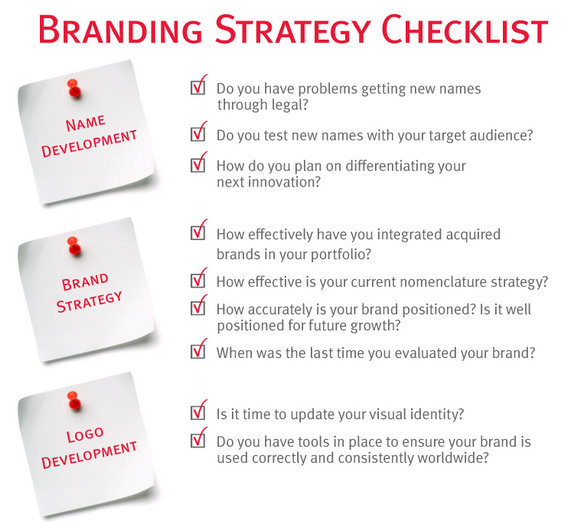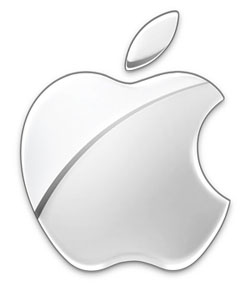To Infinity, and Beyond... Your Average Branding
It's been almost a year since virtually every college kid wept openly at the conclusion of Toy Story 3 (myself included – I have no shame here). However, Disney doesn't plan on letting you forget Toy Story 3 anytime soon, because the loveable gang of toys is making a comeback — on the big screen.
Disney is trying a new method of brand strategy for the Toy Story franchise. Just when people — especially children — might be forgetting about Toy Story 3 a year after its release, Disney is bringing it to the public's attention again, in the hopes that Toy Story merchandise will enjoy an increase in sales.
Cars 2 hits theaters on June 24, and careful viewers might recognize something different about Pixar's animated short that debuts before the feature film. Instead of being the usual random, hilarious cartoon that has no connection to the actual film's story, movie-goers will be treated with Toy Story: Hawaiian Vacation, a short featuring several characters from Toy Story 3.
"Showing those shorts is a super-smart strategy for Disney," former president of Nickelodeon Film & Television Entertainment and founder of Worldwide Biggies Albie Hecht said in an interview with Businessweek. "It's a way to extend the characters and the brand without its fans waiting two or three years for a new movie."
The Toy Story franchise has much to be profited from. In 2010, the merchandise franchise ranked fourth-largest of all of Disney's merchandise lines, just behind Mickey Mouse, Winnie the Pooh, and the Princess doll collection. Given the comparative novelty of Toy Story alongside the decades-old frontrunners, it's an impressive feat.
Woody and Buzz Lightyear toys will no doubt sell for a long time, but for a quick jolt of energy to the merchandise sales, the brand consultants at Disney are making the right move. They've identified a problem — how can we enhance the Toy Story brand to maintain merchandise sales? — and they've implemented a solution in a unique way that won't be seen as an off-putting, generic commercial, but as Pixar fulfilling its animation duties. Without even realizing it, audiences of Cars 2 will endorse the Toy Story brand simply by choosing to see a film produced by the same animation studio.
But what Disney and Pixar will always have going for them is their own namesake brand. The Toy Story franchise is a compelling and heartwarming adventure, but would not have had the same lasting power if produced by a different company. Few can rival the powerful duo's filmmaking abilities, and that's where the true power of their branding lies.
Contributed by Allison Meeks
Right-of-the-Dot Domains - What's it Worth to Your Brand?
No doubt anyone reading this blog is aware that nearly all websites (excluding institutions such as universities and government agencies) end in ".com." But, what you may not know is that in the coming weeks website names will change. The Internet Corporation for Assigned Names and Numbers ICANN – a non-profit for assigning domain names and IP addresses - announced it would create hundreds of new names for category domains that would include both generic spaces (i.e. ".beaches") and brand specific spaces (i.e. ".microsoft"). Technically named gTLD (generic top level domains) these new vanity domains can be more easily understood as "right of the dot domain."
There is going to be a lot of conversation and questions surrounding this move by ICANN in the coming weeks due to the potential headaches brands and companies will face in deciding if and how they will approach this new branding opportunity.
To give you an idea of how this announcement may potentially affect companies and brands we've listed out the Pros and Cons of the new "right of the dot domain" era.
Pros:
- More Controlled Brand Building on the Internet –With company and brand specific domains companies will have the opportunity to build a larger brand presence on the internet through these brand domains. As long as a company can prove they own the trademark to a name they will be granted the domain.
- Generic Domain Names are Fair Game - This could be highly beneficial for the lucky companies that snag these generic domains as they would then control all of content posted at those generic domains. For example, if Nike won the rights to host the domain ".sports" they would control any and all information at ".sports" putting them in a position to be the reigning authority to anything sports related
- Greater Brand Control - Similar to the point above, registering ."yourcompany" will give you control over anything at that domain – virtually eliminating all potential fraud or negative brand images.
Cons:
- Small Application Window – there will only be a 60 day open window for applications – after that it may be another 4-5 years before applications are accepted again
- One Brand Could Monopolize on Generic Spaces – though it can (and will be) viewed as pro for the few that can get the generic domain spaces like ".sports," for those who miss out will now potentially have their competitors controlling all content at such sites, which in turn may turn them in the industry thought leaders on a particular subject.
- A Brand has Hundreds of Brands Under their Umbrella – Some companies, such as Proctor & Gamble, own hundreds of brands; which brings the question where does such a company draw the gTLD line? Does P&G buy a domain for every product, or none at all? Securing gTLD's will not come cheap. So, how much is it worth to a company to have vanity domains for each of their brands? How much control do they really need/want on the Internet?
- A New Townhome or New Domain Name? - Filing cost is $185,000 per domain and an additional $25,000 in annual domain fees.
- The Application Closely Resembles a Short Novel – The ICANN application is a 150 page document that will be published in mid-June. After it is published there will only be a short time window to submit it.
The ".com" that we have all become accustomed to will more than likely continue to be the norm on the Internet, but it will be interesting to see how companies and brands use the new right-of-the-dot vanity URL to help build their brand's online presence.
What Is Your Branding Strategy?
CAUTION: Developing your own branding strategy may cause extreme frustration, which is hazardous to your health. Do not attempt unsupervised!
Maybe hazardous to your health is a slight exaggeration, but a branding strategy is something every brand needs. Successful brands are built on a foundation of meaningful strategy that provides the framework for a brand's meaning. Is your challenge creating a new brand? Merging brands? Or maybe refreshing your brand? Regardless of your branding challenge, our branding experts have created a list of key questions to ask yourself when developing your branding strategy...that is if you're still brave enough to go it alone.

Do you think we missed something important? Share your own branding tips and questions
Happy Birthday Apple Stores!
A lot has changed since 2001. Back in yesteryear Mark Zuckerberg was not a household name, the word tweeting was the sound a bird made, and as of May 2001 Apple had yet to open any retail stores – the catalyst that helped Apple become the brand that it is today.
Today marks the 10th anniversary of Apple opening their first retail store in Tysons Corner, VA, a Washington, DC suburb. At the time many in the retail industry saw the move as risky, because "big box" technology stores had a stronghold on technology sales. Apple broke away from the norm with their stores by exclusively selling Apple products, instead of selling them alongside their competitors.
No doubt much of Apple's success has come from their innovative and industry changing products, but it is also impossible to ignore the fact that the brand's success has a lot to do with their brand image and seemingly flawless execution of brand standards.
Take a moment to think of each Apple store you've been in. It's hard to decipher which is which, and where each was located isn’t it? You can attribute that to the fact that Apple cuts no corners in controlling their retail environments. Each store has the same look and the same feel, when you step into an Apple store there is no second guessing your location. Isn't that something all brands desire to achieve, an all knowing awareness of their brand?
Whether its architectural design, package design, or product design, Apple uses a consistent brand image to maintain a familiarity amongst consumers, and in a world dominated by ever changing technology Apple's consistent design and image has no doubt helped the brand who was ranked as the world's 49th most valuable brand in 2001 skyrocket to the top of the list and land at #1 in May 2011.
So, Happy 10th Birthday Apple stores, I'm sure you'll have no problem getting friends to come to your birthday party.
A Refreshing Taste
Coca-Cola is the most valuable brand in the world, and this month the company is celebrating its 125th birthday. Throughout its history Coca-Cola has extended its brand portfolio many times to include brands such as Coke Zero, Powerade, and Vitamin Water, but it was their original brand extension that has become nearly as strong and recognizable as the original brand itself. Yes, Diet Coke.
In 2011 Diet Coke surpassed Pepsi as the #2 soda in the U.S., and it was right behind, you guessed it, the original Coca-Cola. Having Diet Coke holding the #2 spot is more than a victory for the original Coca-Cola brand, but for the Diet Coke brand as well. It goes to show what most people have known for some time, that Diet Coke is no longer merely a brand extension of Coca-Cola, as it was when it launched in 1982, but a powerful brand on its own.
It was through a strong brand strategy from the start that propelled the brand to be the #3 soft drink in the U.S. by 1984, a spot it held until this year's move up in the ranks. For the majority of the brand's history it has been targeted to woman, originally by spotlighting fashionable woman and good looking men; and more recently by targeting the independent and working woman.
So, just for the fun of it, take a look at some of Diet Coke's most memorable commercials, starting with its very first that aired in 1983:
Insperity | What it Means to Their CEO
You may recall the posts in March about the Insperity launch. We did our best to sum up our engagement with the Administaff/ Insperity team, but it is a lot more exciting to hear about the transition directly from Insperity Chairman of the Board and CEO Paul Sarvadi. (He also happens to be one of the founders.) Take a look at the video below.
Insperity | DNA of a Great Team
While a proven methodology is critical for a successful project, having the right team in place also plays a huge factor in the fluidity of any branding initiative. The Administaff/Insperity team exhibited all the characteristics of a successful project team, and the entire Addison Whitney organization would like to congratulate them on their passionate engagement in the process, willingness to embrace change, and decision to move forward on its new corporate identity with clear strategic intent.
With almost 20 years experience in managing branding projects, we'd like to offer some key attributes that client teams can adopt to result in a successful project and process, and some key takeaways from our work with Insperity.
Meeting deadlines.
Staying on deadline is imperative for an agency or client partner; our reputation is built on the ability to meet our client's time lines. However, it's important for the client to remain on deadline as well. A delayed process means momentum, energy, and excitement around the project can be lost, and those are difficult to regain after a long period of time.
An open mind.
Sometimes, as leaders of an organization, it can be difficult to be honest and open about the challenges you face. Having an open mind about refreshing your positioning, changing your name, or creating brand new standards is imperative to a successful project. If you expect it to be seamless and without challenges, you're in for a difficult journey. Rely on the experience and expertise of your agency/client partner as a resource for guiding you through the project.
Trust your gut.
Even with all of the time we spend learning about our client companies, there’s no way we’ll know your brand as well as you do. When you see results, trust your gut. Suggest changes to be more reflective of your company culture or organizational plans. Often times, the best outcomes of our projects are from collaborations with our client companies.
Utilizing the research correctly.
Good data was important to the Insperity team before making any decision. There is a difference between market research and good market research. Understanding key goals before creating questionnaires is important to getting the insight you need to make critical decisions. Having a skilled, outside agency interpret the data can be important so that you know exactly what the data is saying and corresponding key insights.
Often times, clients will conduct market research looking for the name. They assume that because a name tested high that it's the best choice for their product/service/company. Using the research or supporting data as a guide, not the final decision maker, is the best path of action.
Engaging senior leadership.
A successful project is also contingent on having a senior leadership team (CEO, SVP Sales & Marketing) that is heavily engaged in the process. Having a plan in place that fosters good communication and aligns with the business strategy and vision for the company is essential. A good process incorporates timely progress updates at key milestones with management leaders, board of directors, etc., and presents these updates as a team.
Consistent project team.
There is no quicker way to derail a project than to have 10 members participate in the initial meetings, and only half of that in attendance during the key milestones and touch points. Create a core team (5-7 team members is ideal), and engage them consistently in the process. Even though the core Insperity team did go through a few changes, key team members were consistent and diligent in communicating about needs and deadlines with other project team members.
Celebrating your success.
Often times, this step is skipped by clients. But, the effort it takes to engage in a branding process and the results of that can be a big change for many organizations. Once you have a result, it's important to celebrate and recognize the internal team that worked so diligently on the project. In addition, make a big splash about the new/re-positioned brand. There’s no better way to show the whole organization how important the results are than to celebrate it – no matter whether that celebration is in your board room or in a major league ballpark.
Again, congratulations to the Insperity team on a successful process, project, re-brand and launch. We have been honored and inspired to be a part of your success!
Insperity | Taking it to the streets
On March 3, 2011, the Administaff family gathered to celebrate 25 years of success and a new beginning as Insperity. Some members of the Addison Whitney-Insperity team were lucky enough to attend and witness this magical evening.
Picture this – Minute Maid Park home of the Houston Astros, deep in the heart of Texas, buzzing with the excitement of more than 3,000 people. As we all filed into seats along the third baseline, we were met with an incredible program. Hosted by new Insperity spokesman Jim Nantz, it featured a conversation with Steve Forbes and presentations by company leadership. Saying the presentation by Chairman and CEO Paul Sarvadi was inspiring and energizing just does not do it justice. He passionately talked about the company’s evolution over the past 25 years and his vision for the years to come. This new vision coupled with the new corporate identity was unveiled in 3D – yes, thousands of guests put on branded 3D glasses for the unveiling.
The night featured an amazing spread of food, dancing and festivities. As we headed out to left field to get our souvenir – an Insperity-branded box filled with mementos celebrating the company’s history – Michael McDonald took the stage to cap off the night.
Often times when our clients launch new brand strategies or corporate identities, we do not get to witness the excitement of the event. So being able to attend was very special for our team. Every detail of this event and the Sales Convention happening at the same time were so well thought-out and very impressive including the signs, stage lighting and the entire color palette – all of which changed overnight.
To borrow something we overheard employees saying that night: here’s to Insperity – cheers!
[portfolio_slideshow trans=scrollHorz]
Insperity | Laying the Strategic Foundation
The extensive market research conducted among internal and external audiences helped provide critical insight to help drive both brand architecture and brand positioning recommendations.
Addison Whitney worked closely with various business units to understand the existing brands, their key challenges, and how each could support the Administaff corporate brand. Like many B2B companies, a mostly master branded strategy was ideal due to the efficiency and ease of managing one main brand versus many standalone brands.
Once the organization of the corporate brand was clearly outlined, Addison Whitney began developing the Administaff brand positioning. It’s important that a brand positioning be believable and compelling. Looking back at the research, Addison Whitney correlated compelling to attribute importance ratings and believable to attribute performance ratings. The recommended positioning strategy defined Administaff as the trusted advisor who provides business performance solutions to guide clients toward success.
To help the Administaff team communicate the brand positioning to target audience groups, Addison Whitney developed targeted messaging for both clients and prospects. These messaging guidelines will ensure consistency in communication – one of the most critical parts of brand management.
In addition to driving the brand architecture and brand positioning, one more finding came from the market research. With minimal brand awareness among prospects and incorrect brand associations, it became clear that a corporate identity change would set Administaff up for future success. This decision was not taken lightly by the Administaff team. Nearly 25 years of hard work had built the Administaff brand, and it was time to set a new, strong foundation for the next 25 years of success.
Next step…corporate name and tagline.
(Please note: Administaff is now Insperity. You can find them on the web at insperity.com)
Insperity | Gathering New Insights
When Administaff first approached Addison Whitney in late 2008, it was experiencing strategic challenges similar to many of our clients. In recent years, the company had grown through acquisitions and product development, creating a need to redefine who it is (brand positioning) and how its brands relate to one another (brand architecture).
Founded in 1986, Administaff pioneered the Professional Employer Organization (PEO) industry. The PEO provides small and medium-sized businesses with HR services, including payroll, benefits and administrative support, so that these businesses can better compete for employees and remain compliant with state and federal regulations. As the company grew so too did the types of services it offered.
Through acquisitions and internal product development, the scope of Administaff’s services expanded. Administaff now had to manage not only its own changing corporate brand, but also to develop a strategy for integrating new product/service brands.
Strong market research is critical to developing a compelling and differentiated brand strategy. Addison Whitney’s market research team worked closely with the Administaff team to develop a thorough research plan that would gather insight from internal and external target audience members.
In-depth interviews are a great way to gather detailed insight. First, in-depth interviews were conducted among key Administaff team members to learn about challenges and to help drive the brand process. Then, in-depth interviews with members of the external audience (customers and prospective customers) were conducted. Both of these studies helped the Addison Whitney team develop the survey instruments for quantitative studies with employees and external audience members, which were both conducted online. The employee and external studies were designed to closely align with one another in order to show perceptual gaps.
Using both qualitative (in-depth interviews) and quantitative (online surveys) methodologies to evaluate external audience perceptions, Addison Whitney was able to identify unmet needs and areas in which Administaff out-performed competition.
Having strong, detailed and quantifiable data is important to drive strategic decision making and to support the proposed brand positioning and architecture. This multi-layered research design was important for the Administaff team and critical to the next step in the process, brand strategy.
(Please note: Administaff is now Insperity. You can find them on the web at insperity.com)








